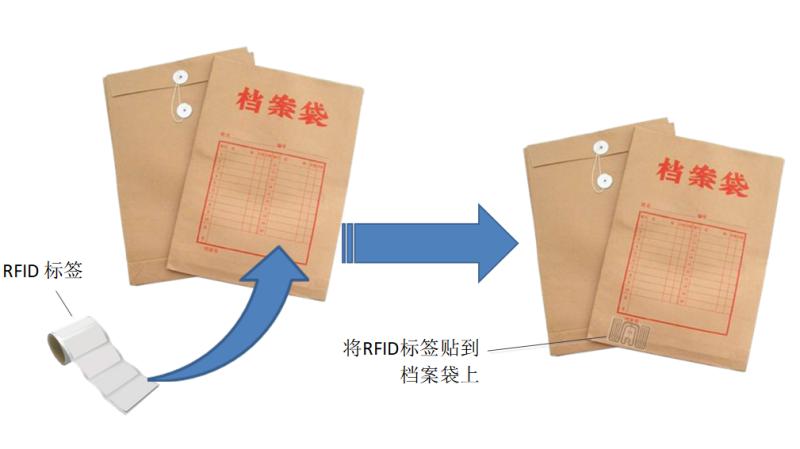Product: Shanghai Leanwo release RFID file management system solution

Bid winner: Shanghai Leanwo won the bid for GCL RFID data automatic entry system project
August 4, 2018
Bid winner: Shanghai Leanwo won the bid for RFID fixed asset management project of Ningbo Public Transport Group
November 4, 2019According to the statistics of the national archives administration, as of 2008, the area of the national archives warehouse was 2.856 million square meters, while 252.845 million volumes of archives were preserved; There are also various audio-visual archives, electronic archives with disk and optical disc as the carrier, microfilm archives, etc. Moreover, every year, local archives warehouses also undertake the task of storing a large number of archives into the archives, and the vast majority of archives warehouses are close to saturation. Therefore, how to make more efficient use of limited archives warehouse resources, maximize the storage capacity of existing archives warehouse and save archives warehouse construction funds has become an urgent problem to be solved by archives departments at all levels. On the other hand, in recent years, with the rise of archives deposit centers in various places, the high-density storage of archives is directly related to the economic and social effects of the deposit centers.
Current situation of Archives
At present, the management capacity of domestic archives is insufficient, which can be summarized as follows:
File management mostly stays in the stage of visual management
※ there is a general lack of automatic identification means, which is not conducive to the inventory work
※ archives generally lack accurate grasp of the existence and location of Physical Archives
※ there is no way to accurately understand whether the archives are in the library, and there is a lack of safety management mechanism
※ the file cataloging process is cumbersome, inefficient and time-consuming
※ file access takes a long time, and the access accuracy is difficult to meet the requirements
※ the storage order of files is easy to be disturbed, and once misplaced, it is difficult to find
※ the inventory operation of archives is unscientific, and the utilization rate of public archives is not high
※ file confidentiality still relies too much on manual work, with poor confidentiality and high risk
※ the file loss prevention work is backward, and many precious files are damaged or lost
※ the management of expired archives lags behind and the destruction of expired archives is not timely
※ the management of file flow is chaotic, and the loss and disconnection of files occur frequently
RFID is the core technology of the system construction project, which adopts RFID radio frequency identification technology. RFID radio frequency identification technology is the core basic technology of Internet of things application technology. The principle of this technology is a new generation of tag identification technology that transmits radio waves through RFID transmitter, activates RFID tag oscillation circuit, generates current, and then reads and writes the stored information in the chip. It is a new practical technology facing the 21st century. In terms of technical application, it carries a large amount of information without contact identification The characteristics of being able to read multiple tags at one time and high reading and writing speed are becoming more and more widely recognized by the society, and are replacing bar code and magnetic stripe technology. Compared with bar code and magnetic stripe technology, RFID tag has absolute advantages. The comparison is as follows:
Quick scan: only one barcode can be scanned at a time; RFID reader can identify and read several RFID tags at the same time.
Miniaturization of volume and diversification of shape: RFID is not limited by size and shape in reading, and does not need to match the fixed size and printing quality of paper for reading accuracy. In addition, RFID tags can be miniaturized and diversified to apply to different products
Anti pollution ability and durability: the carrier of traditional barcode is paper, so it is easy to be polluted, but RFID has strong resistance to substances such as water, oil and chemicals. In addition, because the bar code is attached to the plastic bag or outer packaging carton, it is particularly vulnerable to damage; RFID volume label stores data in the chip, so it can be free from contamination.
Reusable: today's bar codes cannot be changed after printing. RFID tags can repeatedly add, modify and delete the data stored in RFID labels to facilitate the update of information.
Penetrating and barrier free reading: when covered, RFID can penetrate non-metallic or non transparent materials such as paper, wood and plastic, and can conduct penetrating communication. The bar code scanner must be close and there is no object blocking before it can read the bar code.
Large memory capacity of data: the capacity of one-dimensional bar code is 50bytes, the maximum capacity of two-dimensional bar code can store 2 to 3000 characters, and the maximum capacity of RFID is several MB. At present, the capacity of general RFID tag is 1K. With the development of memory carrier, the data capacity also tends to expand. In the future, items will need to carry more and more information, and the demand for the expansion capacity of volume labels will increase accordingly.
Security: because RFID carries electronic information, its data content can be protected by password, so that its content is not easy to be forged and altered.
Significance of building RFID intelligent archives collection management system
At present, archives basically use manual method to count archives data, which is easy to cause archives loss and data confusion. More advanced archives use bar code technology as identification method to realize these functions. However, although the bar code has the advantages of low price and convenient production, it also has some inherent and insurmountable disadvantages, such as easy wear, small storage space and having to be pasted in books, which brings inconvenience to use and is not completely suitable for archives. RFID intelligent management will bring the following advantages and significance:
(1) Rational allocation of resources: RFID intelligent management transforms the work of the archives from manual registration and search of archives to RFID automatic search of archives, so that managers can find the resources they need in the shortest time.
(2) Efficient use of resources: RFID intelligent management lightens the cumbersome workload originally borne by the administrator, reduces the manpower expenditure of the archives accordingly, and reduces the cost accordingly. Archivists use the saved time and human resources to extend the opening time of the archives, for deeper reference work and personalized services, so as to improve the utilization rate of the archives.
(3) The security is greatly improved
1) RFID tag has a unique identifier in the world and cannot be copied; 2) If the label is torn and invalid, there will be an alarm prompt; 3) Equipped with anti-theft device to avoid illegal removal of files; 4) Real time monitoring of file status and abnormal alarm; 5) Automatic statistics to avoid human error; 6) Automatic reminder of file borrowing expiration; 7) Automatically remind when the file retention period expires; 8) Real name registration shall be conducted for the borrowing and return of archives, and the operation data shall be permanently saved.Overall system description
Leanwo prodog archives intelligent archives management system is an integrated archives management platform based on Internet of things technology, image acquisition technology, data acquisition technology, cloud computing, etc. it is specially developed for archives and archives departments of organs, schools, hospitals, archives bureaus, industry and commerce, courts and other units.
Starting from the daily storage, query, borrowing, return, anti-theft and other specific businesses of archives, the system not only collects data from all links of archives circulation, but also realizes the comprehensive visual query management of the materials in the archives through the construction of digital archives cabinet in the system, and provides voice, sound and light prompt alarm for the unauthorized bringing out of archives materials, illegal access, overdue storage, abnormal environment in the archives, etc In addition, this system can be seamlessly connected with subsystems such as archives management system, intelligent dense shelf system, temperature and humidity control system, monitoring system, security alarm system and fire protection system, so as to realize the digitization, automation, intelligence and efficiency of archives business handling and management.





